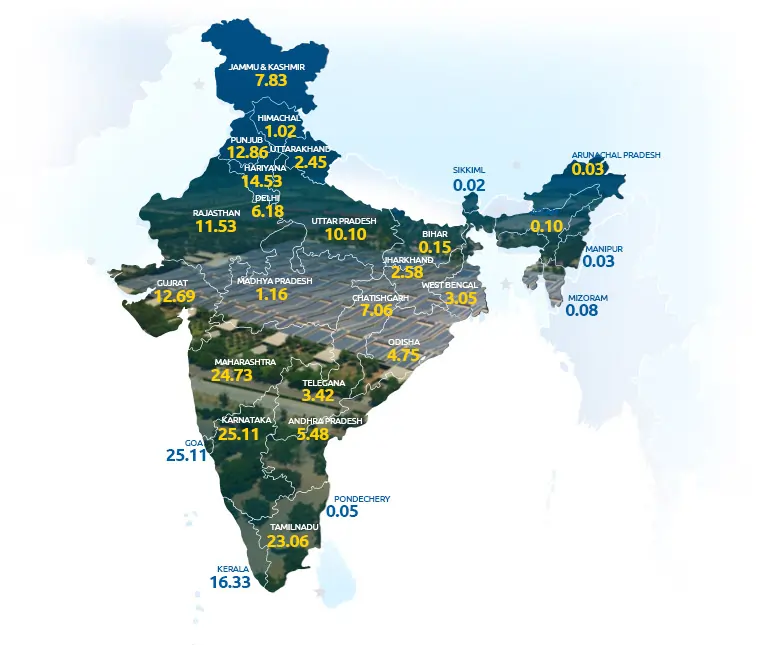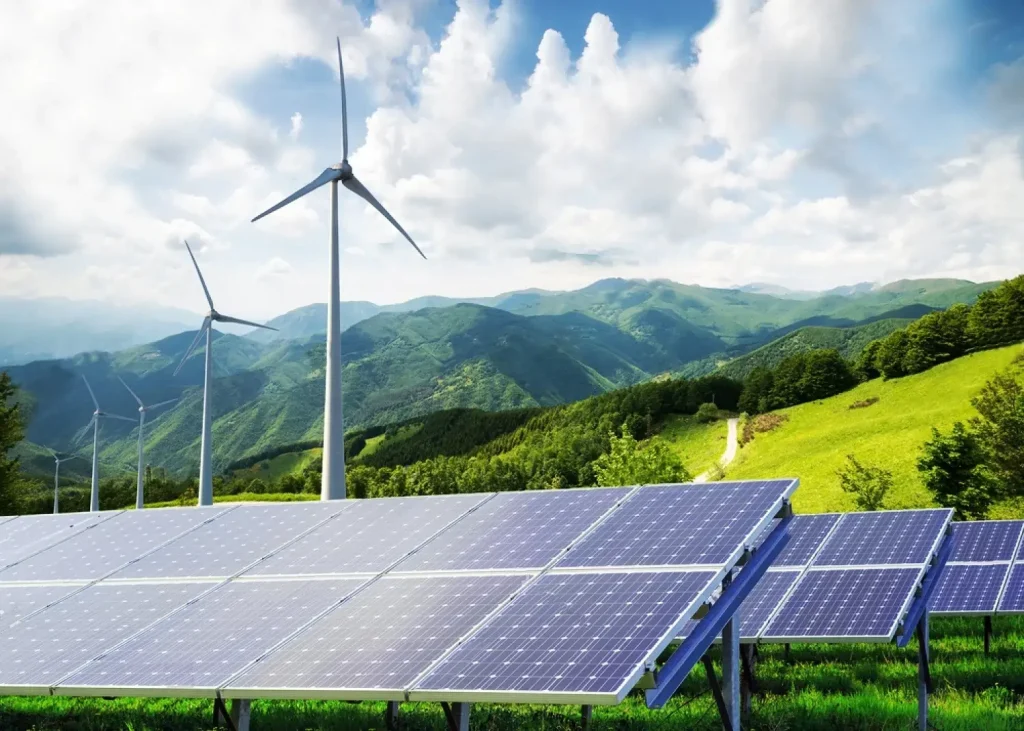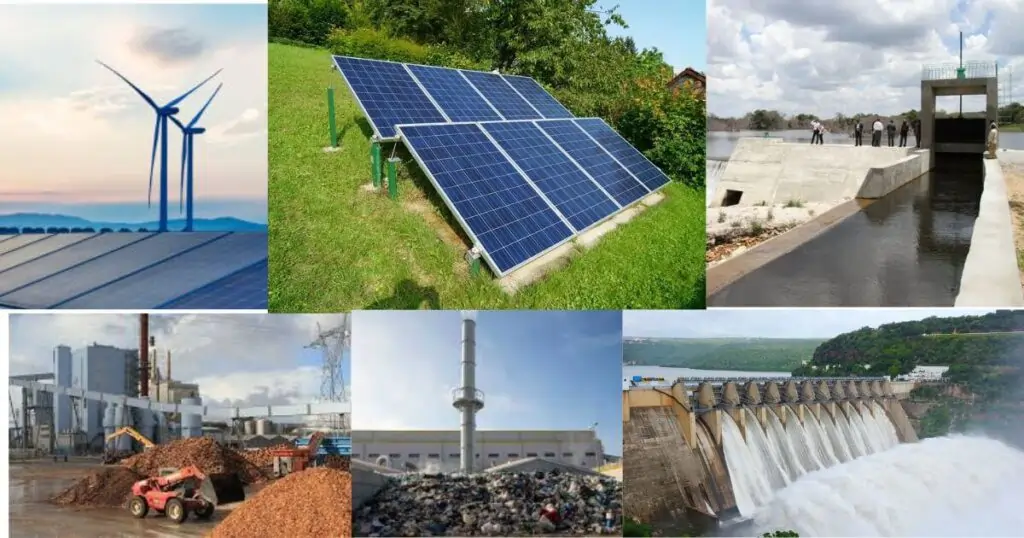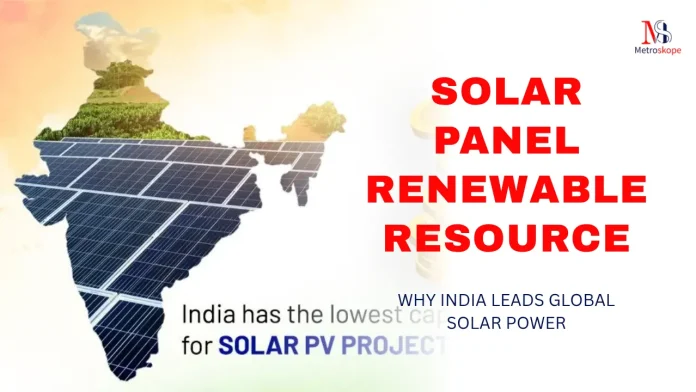India’s Historic Solar Leadership Achievement
Solar Panel Renewable Resource: India has definitively established itself as the world’s leading solar power nation, achieving an unprecedented 110.9 GW of installed solar capacity as of June 2025.
This remarkable milestone positions India as the third-largest solar market globally, with solar energy accounting for nearly 24% of the country’s total installed power capacity.
Breaking Records and Setting New Standards
India’s solar transformation has been nothing short of extraordinary, with a 145% annual market increase in 2024 that saw 30.7 GW of new solar capacity added – more than doubling installations compared to 12.5 GW in 2023.
This rapid expansion represents a 3450% increase in solar capacity over the past decade, rising from just 2.82 GW in 2014 to over 110.9 GW in 2025.
Current Solar Infrastructure Breakdown
| Solar Segment | Capacity (GW) | Market Share |
|---|---|---|
| Ground Mounted Solar Plants | 89.29 GW | 79.1% |
| Grid Connected Rooftop | 18.84 GW | 16.7% |
| Hybrid Projects (Solar Component) | 3.06 GW | 2.7% |
| Off-Grid Solar | 1.71 GW | 1.5% |
| Total Solar Capacity | 110.9 GW | 100% |
Additionally, India has 84.10 GW of solar projects under implementation and 47.49 GW under tendering, bringing the total solar and hybrid project pipeline to an impressive 296.59 GW.
Why Solar Panels Are the Ultimate Renewable Resource

Scientific Foundation of Solar Renewability
Solar panels represent the purest form of renewable energy technology because they harness the sun’s radiation – an inexhaustible resource that continuously replenishes itself.
The sun delivers more energy to Earth in one hour than humanity consumes in an entire year, making solar the most abundant renewable resource available.
Unlimited Resource Potential
India’s solar energy potential is estimated at 748 GW, assuming just 3% of wasteland area is covered by Solar PV modules according to the National Institute of Solar Energy (NISE).
This enormous potential far exceeds India’s current electricity demand, providing virtually unlimited clean energy capacity for future growth.
Zero Depletion Characteristics
Unlike fossil fuels that deplete with extraction, solar energy operates on a completely renewable cycle:
- Continuous replenishment through solar radiation reaching Earth daily
- No resource depletion occurs when capturing and converting sunlight
- Sustainable for billions of years as the sun continues nuclear fusion
- Environmentally non-invasive harvesting process
Strategic Advantages Driving India’s Solar Leadership
Geographic and Climate Benefits
India’s location provides exceptional solar resource advantages that enable global leadership:
- Most regions receive 4-7 kWh per square meter daily of solar irradiation
- About 5,000 trillion kWh per year energy is incident over India’s land area
- 300+ sunny days annually in most regions provide consistent generation
- Vast available land including desert areas ideal for utility-scale projects
Government Policy Excellence
India’s comprehensive policy framework has created optimal conditions for solar expansion:
- National Solar Mission launched in 2010 with ambitious targets
- 500 GW renewable energy goal by 2030 with solar playing the leading role
- PM Surya Ghar Muft Bijli Yojana targeting 1 crore households with rooftop solar
- 100% FDI permitted under automatic route for renewable energy projects
Economic Competitiveness
Solar power has become the most cost-effective electricity generation source in India:
- Tariffs have declined dramatically making solar cheaper than coal
- Manufacturing ecosystem supports domestic value chain development
- Employment generation across installation, maintenance, and manufacturing
- Energy security enhancement reducing fossil fuel import dependence
Leading Global Solar Performance Metrics

International Recognition and Rankings
India’s solar achievements have earned global recognition and top rankings:
- 4th globally in overall renewable energy capacity according to IRENA
- 3rd globally in solar power capacity behind only China and USA
- 4th globally in wind power capacity complementing solar leadership
- Leading the International Solar Alliance with 122 signatory countries
Record-Breaking Generation Performance
India’s solar power generation reached new heights in Q1 2025, generating approximately 42 billion units (BU) of solar power – a remarkable 32.7% year-over-year increase.
This performance demonstrates not just capacity growth but actual productive utilization of solar resources.
State-wise Leadership Distribution
India’s solar success spans multiple states, with regional leaders driving national performance:
- Rajasthan leading with 13.1 BU generation in Q1 2025
- Gujarat contributing 6.8 BU with consistent growth
- Karnataka generating 4.6 BU with strong rooftop adoption
- Tamil Nadu producing 4.5 BU with diverse solar applications
- Maharashtra achieving 2.5 BU with urban solar integration
Manufacturing and Technology Innovation
Domestic Manufacturing Strength
India has developed a robust solar manufacturing ecosystem supporting global competitiveness:
- Indigenous supplier ecosystem across solar value chain components
- Production Linked Incentives (PLI) supporting domestic manufacturing
- 50 solar parks sanctioned across 12 states with 500 MW+ capacities each
- Technology advancement in module efficiency and system integration
Innovation in Solar Applications
India pioneered innovative solar deployment models:
- Floating solar installations optimizing land use efficiency
- Agrivoltaics combining agriculture with solar generation
- Solar parks enabling large-scale deployment with shared infrastructure
- Rooftop solar democratizing renewable energy access
Environmental and Climate Impact
Carbon Emission Reduction
India’s solar expansion contributes significantly to global climate objectives:
- Zero operational emissions from solar power generation
- Displacing coal-fired generation reducing carbon intensity
- Supporting NDC commitments of 45% emission intensity reduction by 2030
- Contributing to net-zero by 2070 national climate target
Air Quality Improvement
Solar energy deployment provides direct environmental benefits:
- No air pollutants produced during electricity generation
- Reduced particulate matter from displaced fossil fuel plants
- Improved public health outcomes through cleaner air quality
- Water conservation as solar requires minimal water consumption
Economic Impact and Investment Attraction
Massive Investment Flows
India’s solar sector has attracted unprecedented investment levels:
- Record investment flows in renewable energy sector during 2024-25
- Private sector participation driving capacity expansion
- International cooperation through multilateral funding mechanisms
- Domestic financial institutions supporting solar project financing
Job Creation and Economic Development
Solar energy expansion generates substantial employment opportunities:
- Manufacturing jobs in solar component production
- Installation and maintenance employment across rural and urban areas
- Engineering and technical services supporting project development
- Rural economic development through distributed energy generation
Future Outlook and Ambitious Targets

2030 Renewable Energy Vision
India’s solar trajectory aims for even greater leadership by 2030:
- 500 GW total renewable capacity with solar comprising majority share
- 50% of electricity capacity from non-fossil fuel sources
- Annual capacity additions of 50 GW required through 2030
- Energy storage integration for 24/7 renewable power supply
Technology Advancement Goals
Next-generation solar technologies will enhance India’s competitive advantages:
- Perovskite solar cells achieving higher efficiency rates
- Bifacial panel deployment maximizing energy capture
- Solar-plus-storage systems providing grid stability services
- Green hydrogen production using solar electricity for industrial applications
Global Market Leadership
India is positioned to influence global solar market trends:
- Technology export potential leveraging manufacturing capabilities
- International project development through technical expertise sharing
- Solar Alliance leadership promoting global solar adoption
- Climate diplomacy showcasing successful renewable energy transition
Solar Renewable Resource Supremacy
India’s emergence as the global solar power leader represents the successful harnessing of solar panels as the ultimate renewable resource. With 110.9 GW of installed capacity and ambitious targets of 500 GW by 2030, India demonstrates how abundant solar resources, supportive policies, and technological innovation can drive unprecedented clean energy transformation.
The renewable characteristics of solar energy – unlimited availability, zero depletion, and minimal environmental impact – provide the foundation for India’s sustainable energy future.
As solar power becomes increasingly cost-competitive and technologically advanced, India’s leadership position will strengthen further, contributing to global climate objectives while achieving energy security and economic development goals.
For policymakers, investors, and energy planners worldwide, India’s solar success story provides a compelling blueprint for leveraging renewable resources to achieve both national development objectives and global sustainability commitments.

